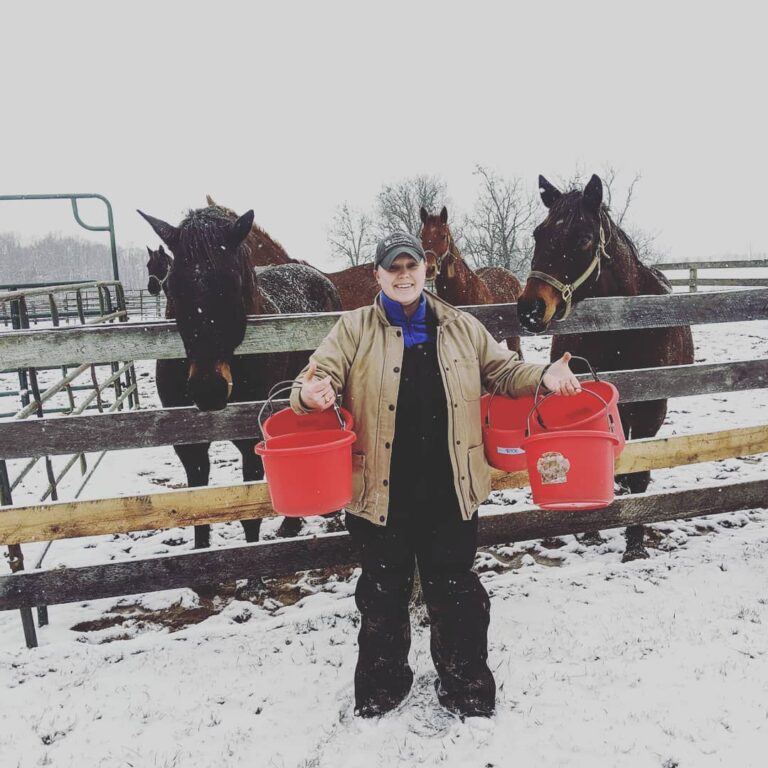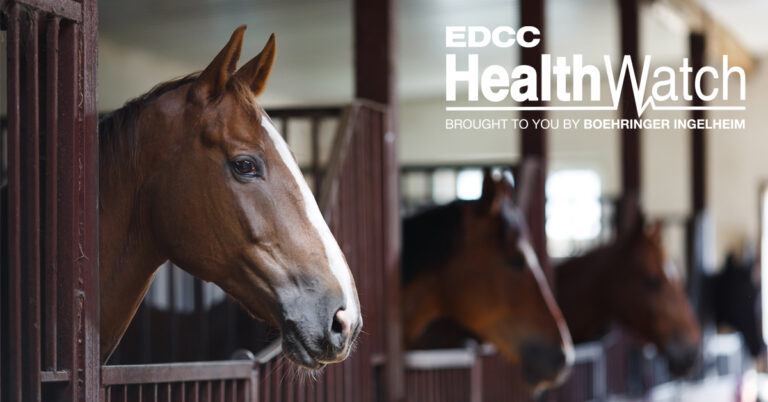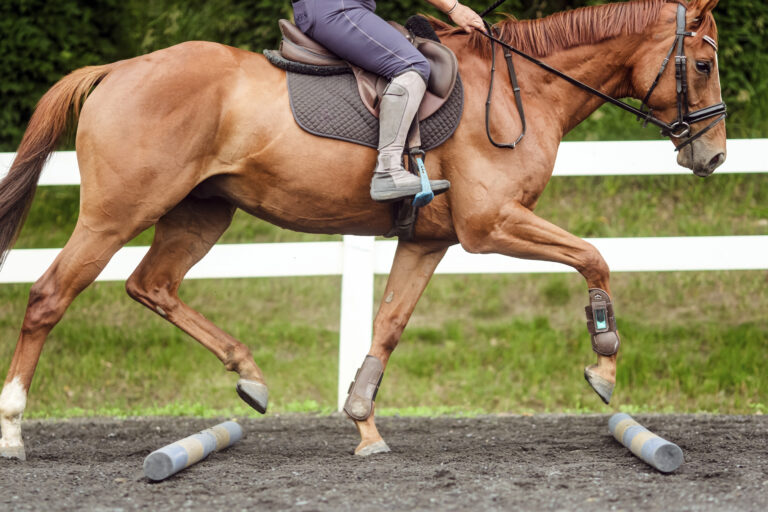
When thinking about the current state of equine practice, it is important to consider a broad survey of data from both the world in general as well as the equine and equine veterinary industries. Current global and national economic conditions strongly influence current conditions in equine practice.
The economic impacts of inflation, supply chain issues, Russia’s war on Ukraine and global recession will all affect equine veterinary practices. Declining horse numbers, changing owner demographics and corporate acquisitions of equine practices will impact the strengths and weaknesses in the equine world. High educational debt, changing student demographics, compensation issues and family needs of equine veterinarians are also altering the landscape.
There are significant challenges, but also many opportunities in equine practice.
Economic Indicators for Equine Practice
Some economic indicators are currently worrisome for the equine world, but others are positive. Equine practice is highly dependent on horse owners feeling wealthy. When stock prices drop, typically people feel poorer, even if they only have long-term investments that they do not utilize for ordinary expenses. Unemployment rates typically rise in recessions, but they are currently low. In addition, unemployment rates among college graduates are usually significantly lower than for those with less education. Since most horse owners are in the educated segment, this bodes well for continued spending in the equine veterinary sector.
In addition, when looking at real average household income over the last 50 years, those in the top 20% have seen significant gains. Meanwhile, those in the other quintiles have remained flat. As most horse owners are in the top 20% of income, this means they have more disposable income to spend on luxuries such as horses.
The COVID-19 pandemic was kind to equine practices. Most practices reported increased revenue in 2020 compared to 2019, with continued growth in 2021. Pre-purchase exams increased, as did horse sale prices. Many practitioners worked more hours and saw more emergencies. Unfortunately, this increased workload also increased exhaustion and burnout among veterinarians.
Horse Ownership Demographics
Equine practices depend on horses remaining popular and numerous. It is estimated that the number of horses in the United States has decreased by 23% in the last 10 years. Recent estimates of the U.S. equine population are 6 million (Brakke study 2014), 8.9 million (AVMA AAEP Equine Economic Impact Survey 2016) and 7.2 million (American Horse Council [AHC] Study 2017). However, the 2017 AVMA Pet Ownership & Demographics Survey suggested that pet horse numbers have fallen by 61% in the last five years.
The AHC study indicated that horses are located all around the country, with the top three states, in order of horse population, being Texas, California and Florida. Although costs of keeping a horse have risen, more than 90% of horse owners expected to own the same number or more horses in 2022 compared to 2021, according to a survey done by the American Horse Publications. Fewer than 10% of respondents in that survey expected to own or manage fewer horses in 2022 than in 2021.
Widespread Equine Involvement in U.S. Households
According to the AHC’s 2017 Study, 1.3% of the U.S. population owns horses, 29.2% of American household members participate in equine-related activities but do not own a horse, and 13.2% spectate at horse events but do not own or participate. This means that almost a third of U.S. households own horses or participate in some way in the equine world, which is very good news for the industry.
The median age for horse owners is 38 years. For participants, the median is 22 years, and for spectators, 36 years. Among non-owner horse activity participants, 38% are children less than 18 years of age, so there is a new group of potential owners in the wings for the future. Among horse owners, the study found that 22% have incomes of $100,000-$149,000 and 28% have incomes >$150,000.
How We See Horses
Horses are increasingly valued by their owners and society. The 2017 AVMA Pet Ownership & Demographics Survey showed that 42% of horse owners considered them to be pets, 47% as family members, and just 11% as property.
The increasingly common societal view of animals as sentient beings worthy of humane care is impacting equine sports. Social license to operate is defined as “an intangible, unwritten/and non-legally binding social contract whereby the community gives the industry the right to conduct its business.” In the U.S., the public is currently concerned about and attentive to horse racing, specifically catastrophic breakdowns, racing of 2-year-olds, aftercare of retired racehorses, race-day medication, doping and whip use. This broad public concern is likely to extend to many aspects of equine sport as social media shines a light on negative practices.
Because veterinarians benefit monetarily from some of these issues, this can result in lost credibility with the public.
Equine Practice

Equine practices are widely varied in size and scope. According to AVMA 2021 statistics, equine veterinarians are a small fraction (4.9%) of the total number of private practice veterinarians, representing 3,645 of 73,900. Females have become the majority, comprising 56.5% of equine veterinarians. Veterinary students are now 85% female on average. In the AAEP, 49% of members are over the age of 50 years. In 2016, 52.8% of equine practices had one to two FTE (full-time equivalent) veterinarians, while 20.6% had six or more.
Emergency Care Availability in Equine Practice
With these demographic changes come challenges. One of the most stressful and alienating aspect of equine practice is the need to provide emergency care 24/7/365. This need contributes to high attrition in the field—in part, perhaps, because new female entrants often have more family responsibilities.
The 2012 AAEP Owner Trainer Survey showed that one of clients’ top priorities in choosing a veterinarian is the availability of on-the-farm emergency care. In the last 20 years, about 50% of new graduates that were AAEP members have let their memberships lapse within five years of graduation. The number of new graduates entering equine practice has also been decreasing. From a high of 5.7% in 2003, this number fell to 1.0% in 2019 before rebounding to 1.4% in 2020 and 2021. In addition, 97 new graduates entered equine internships in 2021.
Equine Veterinarian Shortage
There is a shortage of veterinarians to fill available jobs in all sectors. In 2021, the AVMA reported that there were 18.5 jobs for veterinarians per veterinarian jobseeker. Salaries, work hours and emergency service requirements are more attractive in the companion animal sector than the equine sector to many young graduates.
Veterinary unemployment climbed to 1.8% in 2021, up from 0.7% in 2020, according to the AVMA census. This means that 1.8% of veterinarians are looking for employment or enrollment in an internship or residency or working outside of veterinary medicine. In addition, the AVMA 2021 Census study revealed that 44% of veterinarians have considered leaving the veterinary profession, up from 38% in 2020. Moreover, 39% of veterinarians said they have considered leaving the veterinary profession within the last five years, and 23% said they have considered leaving within the last year.
Approximately 26% of veterinarians in 2021 indicated they want to work fewer hours. They cited such reasons as better work-life balance and mental health issues including stress, anxiety, burnout, feelings of being overworked and issues related to childcare and childbearing.
The Bureau of Labor Statistics has projected veterinary employment to grow 19% from 2021 to 2031, much faster than the average for other occupations. That group projects 16,800 veterinarians need to be added to the workforce.
Geographic and Population Concerns
Geographic maldistribution is likely to remain a problem in the profession, which could leave some areas underserved.
As the U.S. population increases, the pet ownership percentage is forecast to remain stable, so demand will continue to increase.
Regarding job listings throughout the veterinary industry, on the AVMA Veterinary Career Center and other job sites, the AVMA reported that 70% come from corporate or consolidated practices and 30% percent from independently owned practices. Relatedly, about 35% of veterinary associates are employed by corporate practices. The remainder work for independently owned single or group practices.
Financial Concerns for Equine Veterinarians
Veterinary school graduates struggle with educational debt. Financial professionals state that a debt-to-income ratio (DIR) of <1.4 is reasonable for those in the medical field. In 2021, the DIR for recent graduates entering full-time equine practice was 3.7. According to the AVMA 2021 State of the Profession Report, the average debt of those who graduated vet school with debt was $188,853 in 2020, with 12.5% having debt levels >$300,000 and 1.4% having debt levels >$400,000. Those that attended offshore veterinary schools were more likely to have high amounts of student loans. About 30% of equine-focused graduates had no debt compared to about 20% of graduates entering companion animal practice. Graduates with no debt numbered 17%.
Take-Home Message
The combination of growing attrition, high educational debt, emergency service requirements, lower compensation than companion animal positions and intense work hours in equine practice is a significant challenge to the industry. Fortunately, the strength of the equine industry, despite the current economic downturn, allows continuing opportunity.
Our profession will likely continue to have robust demand and can stay strong into the coming decades by adopting new paradigms. Practices are increasingly embracing the changes needed to keep equine veterinarians in equine practice. Through flexible work schedules, improved practice cultures, shortened work weeks, emergency service coalitions, stronger boundaries between work and personal life and higher compensation, the tide is turning on the loss of exceptional talent that we have been experiencing.
These new paradigms allow our changing workforce to have the flexibility and support that they need while keeping practices financially healthy. Embracing the changes will keep the equine veterinary industry strong for the future.









